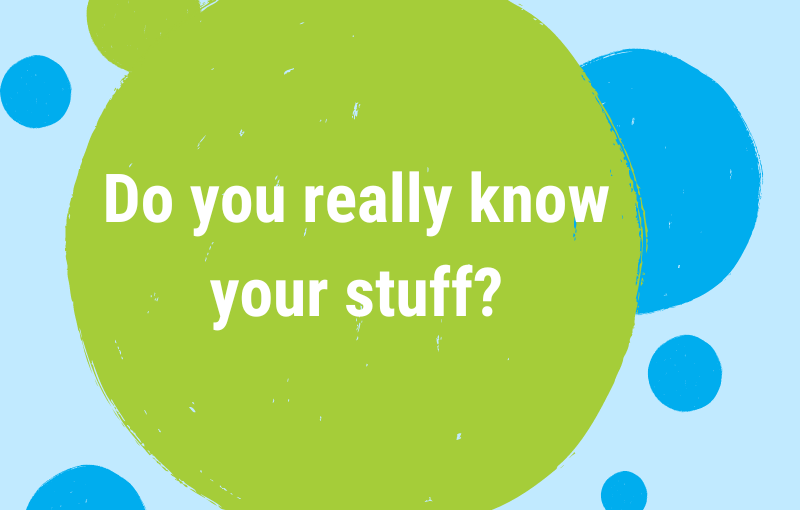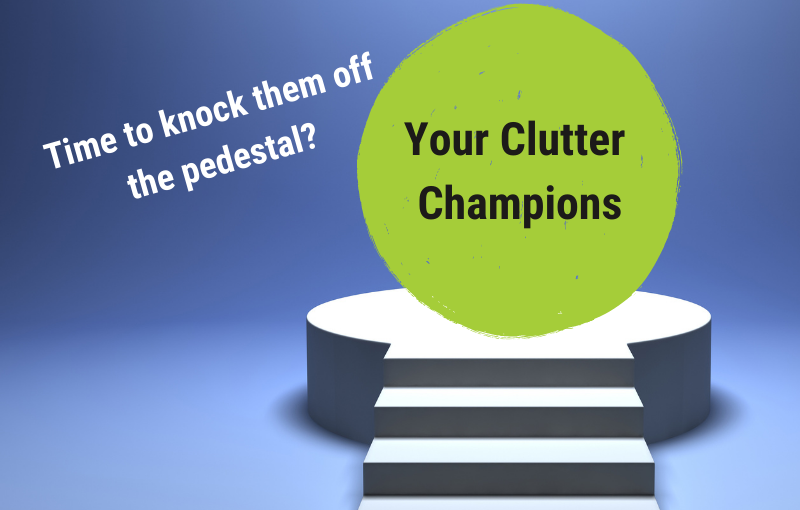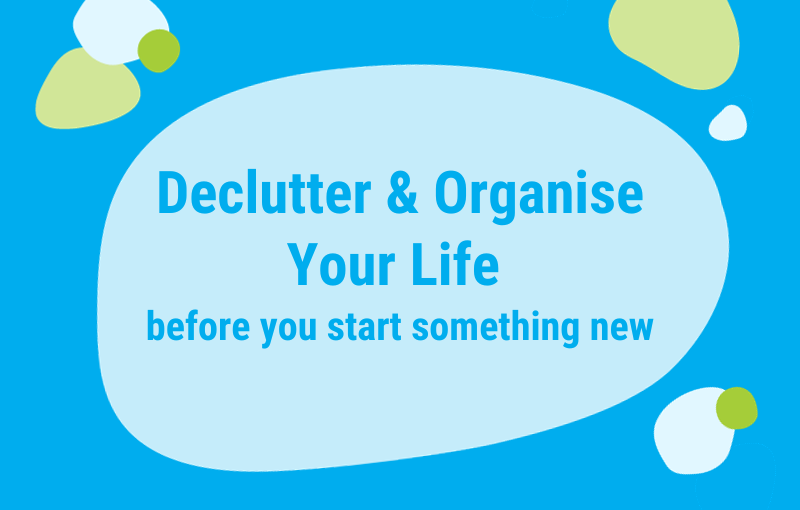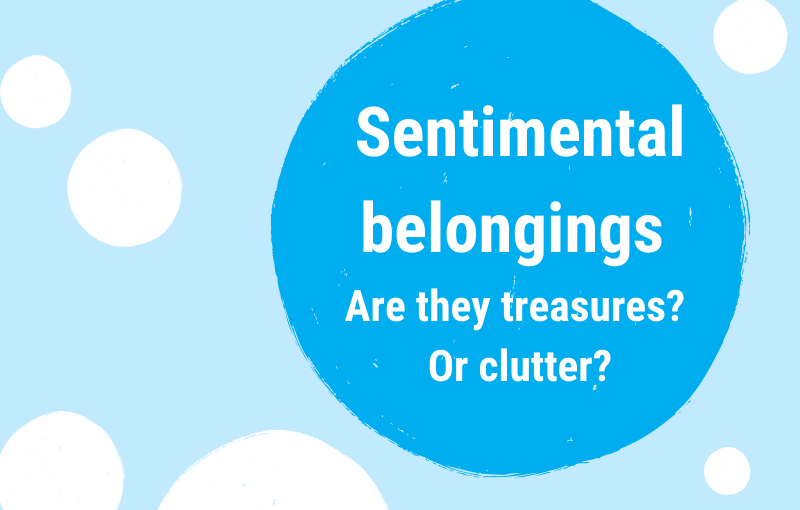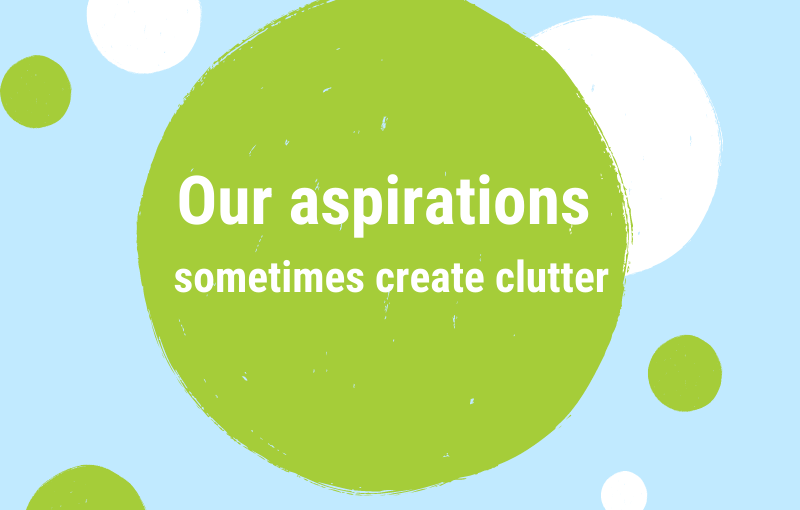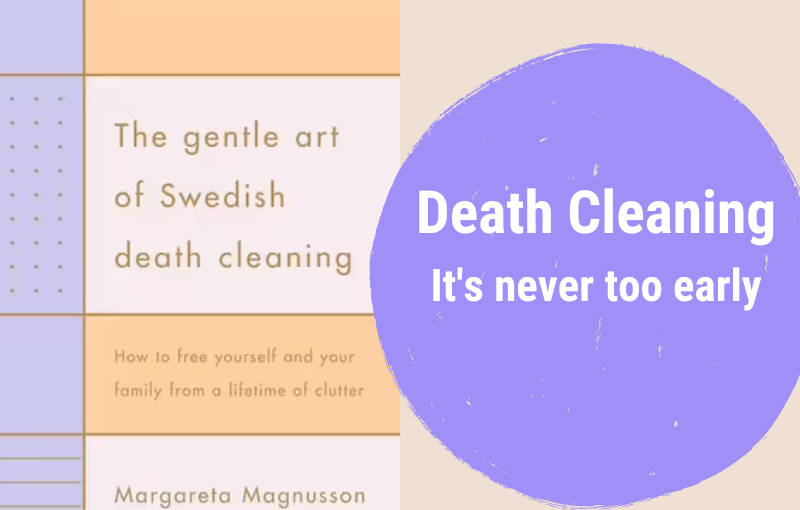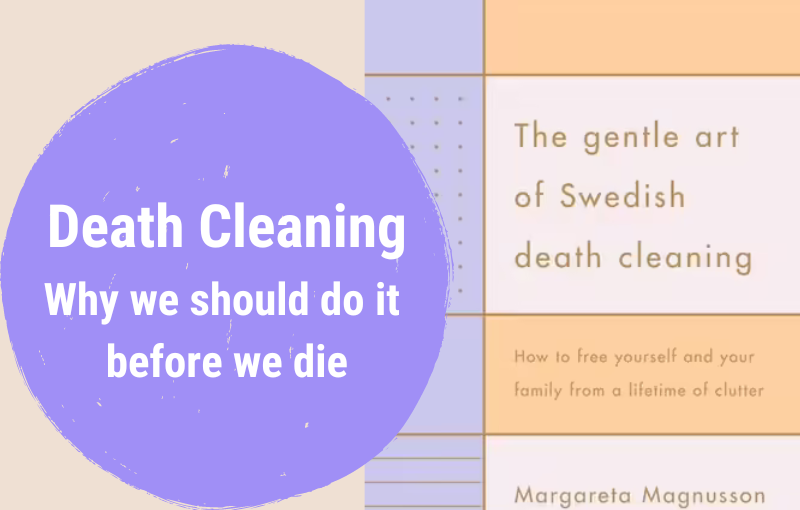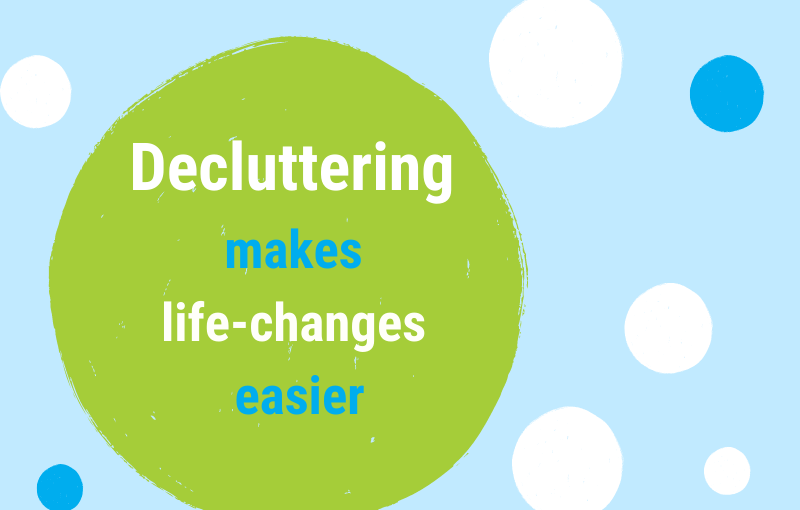Sentimental items – Why are we so sentimental about them?
The difference between aspirational and sentimental belongings
Most of us share the experience that it is particularly tough to make decluttering decisions with regard to these two types of belongings:
We particularly struggle to let go of aspirational and sentimental belongings.
Our aspirational belongings have to do with our future, or our former dreams of the future: They represent our current and past ambitions and aspirations, our ideas of our ideal ‘fantasy’ selves and lives.
Our sentimental attachment to certain possessions is usually linked to our past – to previous phases in our lives and to our past identities: Sentimental belongings refer to past experiences, remind us of people who were/are important to us, or keep memories of special events and accomplishments.
I shared my thoughts about aspirational belongings in a recent article (click to read).
Today I wish to discuss
Our struggle with letting go of sentimental items.
Why we ‘feel sentimental’ about some of our belongings
We all feel – more or less – emotionally attached to some (or many) of our belongings. These belongings remind us of something, usually something related to the past – they remind us of special people, eras, places, experiences, feelings in our life.
Often, sentimental items have no real use or monetary value. And in most cases, we are the only ones who appreciate and value them.
Some of us keep things from our childhood or teenage years such as stuffed animals, books or clothes, some of us have a collection of photographs and papers that remind us of important situations in our lives, some of us act as the guardians of the family heirlooms.
There is nothing wrong with these sentimental things.
If we truly value them and can easily store them in our home, there is no reason to say goodbye to them.
So, why does the expression ‘sentimental stuff’ have a slightly negative connotation?
Why do many of us feel uncomfortable when they talk about and explain the existence of their sentimental belongings? Why do we often feel we have to justify why we keep certain things?
Little Exercise – How well do you know your sentimental belongings?
Lean back for a moment and think about your home and all the things that ‘live’ there with you, all the items you have given permission to move in and to stay with you.
Imagine yourself walking through your rooms, looking at the walls and open shelves, opening cupboards, wardrobes, and drawers, pulling the boxes from under the beds or behind curtains.
Now make a list of the things with emotional value that come to your mind.
What does your list look like?
-
- How many sentimental items do you remember (without getting up and checking out!)?
- Do they all belong to one category of belongings, such as photos, images, papers, clothes, books, collections, etc.?
- Do all the things you remember refer to one special phase in your life? Are they all linked to one special person? Or one special experience/event?
- Or do you keep a wide variety of sentimental items linked to different phases of your past?
- What kind of emotions do you have about the things you remember? Positive feelings? Or negative? Or neutral?
- How much space does the sentimental stuff on the list occupy in your home?
- Do you think your list is complete? Or do you assume there are many more things you keep for sentimental reasons but can’t remember at this moment?
Now evaluate the insights you gained from the little exercise.
Do you feel completely happy about the sentimental stuff in your home? Or is there a little nagging feeling that there might be some value in having a closer look at them?
When do sentimental belongings become problematic?
There are three main reasons why sentimental items can develop into problem items and become a burden that makes us feel overwhelmed and stressed.
Let’s find some little example stories to understand them better:
#1 – We keep too many sentimentally charged belongings.
It’s nice if our wedding photo on the shelf in the living room evokes a smile on our face whenever we look at it. But do we really need to keep the other 850 wedding photos in the huge box in the basement that we haven’t looked at for ages?
Our favourite teddy bear is very successful in causing memories of our childhood and warm feelings in our stomach. But does it need 13 other stuffed friends around it?
The vase from Auntie Mary looks really nice on the dinner table. But the three tubs with all the other vases, crockery, and cutlery we inherited from her actually only collect dust and spider webs in the garage, don’t they?
#2 – We hold on to things that are not valuable to us personally.
We never liked landscape paintings. Now we have four such paintings hanging on the walls in the guest room. They had decorated the living room of our grandparents for as long as we can remember. We just didn’t dare to say ‘no’ when they moved to a small apartment and needed a new home for their paintings.
We inherited our father’s coin collection which we actually hate. It reminds us of all the arguments our parents had whenever our father spent money on a new coin.
We never enjoyed the endless piano lessons our parents arranged for us when we were a teenager. Now the piano sits in our living room, silently, collecting dust and causing bad feelings.
#3 – We surround ourselves with stuff that keeps us stuck in the past so that we are unable to enjoy our present life.
Our mother passed away four years ago and we took all her belongings because it felt too hard to sort anything out. We still struggle to look through the stuff that occupies the guestroom and half of the basement.
After our divorce, we moved out and took along the dinner table from the old house. It’s actually too big for the new place, and it reminds us of the best and the worst times of the marriage. Often, when we sit at this big thing, we feel small and lonely. And angry.
We always loved cooking and our kitchen is fully equipped with anything you need to prepare extraordinary meals. However, we switched to simple and easy-to-do meals many years ago and don’t need all the cooking stuff any longer. What we actually would need is more space for our arts and crafts supplies.
How can we clear up sentimental clutter?
Try these strategies:
#1 – Asking the question ‘Why?’
This is the most helpful and effective question we can ask ourselves in any intentional decluttering process but especially when we want to declutter sentimental stuff.
Ask yourself:
-
- Why do I keep this thing? What is the reason behind my decision?
- And – very important – Do I like my reason?
For example:
If you use only one of Auntie Mary’s vases but keep another 11 vases in boxes in the attic, you could ask:
-
- ‘Why do I keep vases I don’t like and use?’
- If your reason is: ‘I have to. Aunt Mary was always so kind to me, I really liked her. I can’t give away her vases.’ you can ask again:
- ‘Why do I think I can’t give them away?’
- Your next answer might be: “I’d feel guilty and bad if I gave them away.” Ask again:
- ‘Why would I feel guilty? Would Aunt Mary want me to feel guilty? And even if she did, is being afraid of feeling guilt a good reason to allow things to occupy space in my home and life that I don’t like and use?’
Finding answers to our ‘Why’-questions gets easier as soon as we are aware of our personal values, our goals, and our visions for our life.
#2 – Choosing only sentimental items that give us positive feelings
It is important to uncover and ‘honour’ any negative feelings we have related to belongings from the past. But then it’s time to let them go and close that chapter of our life – so that we can concentrate on the here and now.
Positive reminders of our past, on the other hand, can sometimes help us to feel positive in the present, too.
For example:
If after your divorce the wedding dress – that you keep hidden in the back of the wardrobe – makes you feel sad, or angry, you could decide to go through those feelings one more time, and then let them go – the negative feelings and the wedding dress.
The photograph of your happy face at the finishing line of the marathon last year, on the other hand, might deserve a nice frame and a special place on the shelf in your living room.
#3 – Choosing just a few special sentimental reminders and letting go of the rest
As soon as you have got a better understanding of what’s truly valuable to you, you can make intentional decisions about what you want to keep and take care of. And what you want to let go.
For example:
Knowing now better why you don’t have any interest in collecting coins and why you always hated your father’s collection, you are ready to give the collection to someone who does appreciate it. You might want to keep one coin as a reminder of your father and his enthusiasm for his hobby but you don’t need to hold on to the whole set any longer.
#4 – Taking pictures as memory-keepers and letting go of the physical items
That’s often a good solution if we have so many sentimental belongings, or if want to keep reminders of our family heirlooms, or if we don’t like to let go of certain things but need to give them away because we don’t have the space to keep them.
For example:
If you have to drastically reduce the number of personal belongings because you are going to move to a smaller place with much less storage space, you might feel sad having to leave so much behind. Take a camera, walk around your current home, and take pictures of anything you feel attached to but can’t take along. Then create a nice photo book that you can keep forever and flip through whenever you wish.
#5 – Doing several rounds of sentimental decluttering
That’s a very good strategy if the idea of making let-go decisions about your sentimental stuff makes you freak out. You can avoid a panic attack by taking small steps to get through the process.
Take out some of your sentimental items, and start thinking about them, without any obligation to make decisions.
When you pull them out again some days later, you might notice that your feelings have slightly changed, you might feel less attached to some of the things, and you might even be able to say goodbye to a few of them.
Take out another set of sentimental items, and start the process again.
Spending some time with our sentimental items is a worthwhile experience
– whether we finally decide to keep or discard them – we always learn more about ourselves, our emotions, and our values.
And that’s a good thing, isn’t it?


